Dior’s secret jewel garden
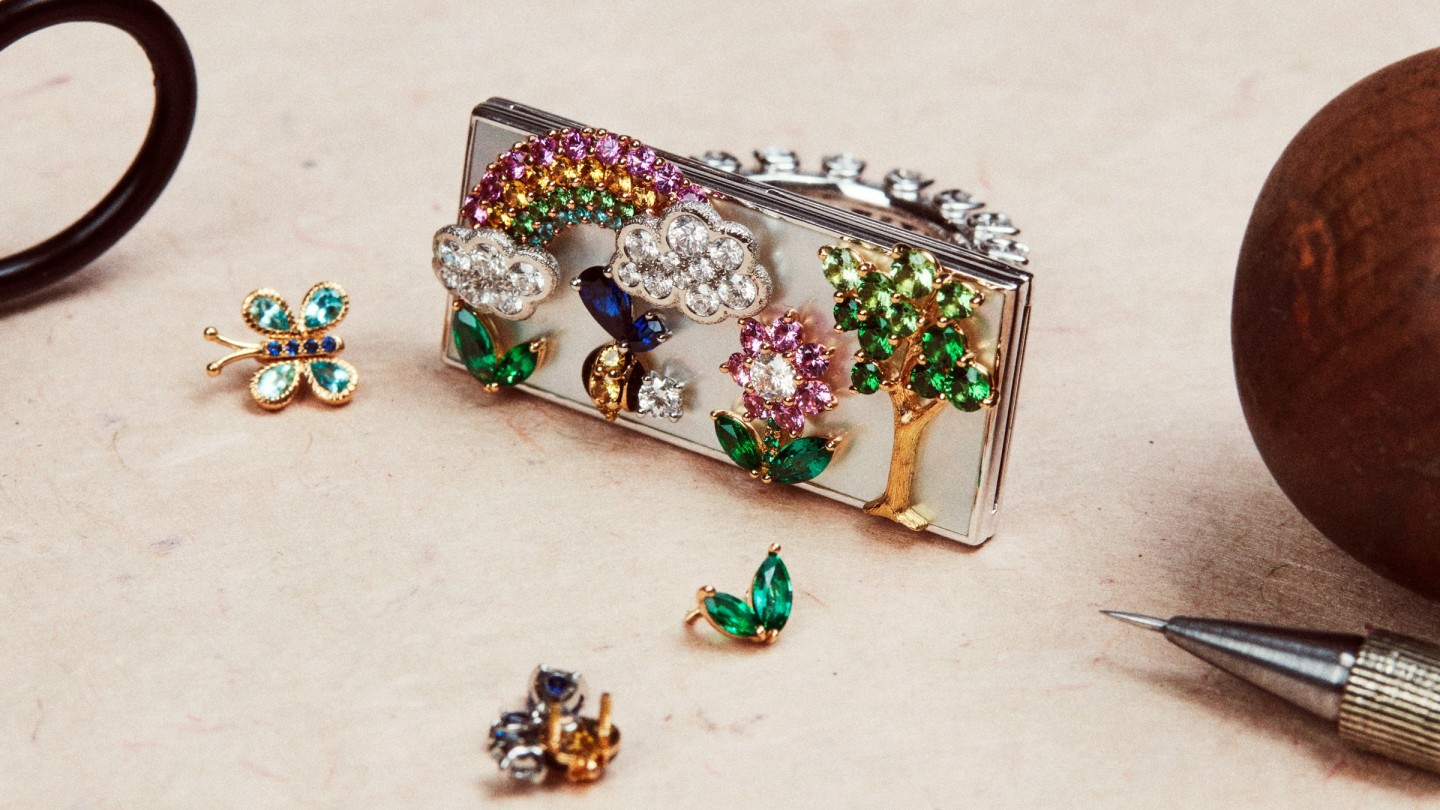
Roula Khalaf, Editor of the FT, selects her favourite stories in this weekly newsletter.
In the inky stillness of night, on the banks of Lake Como, models in couture gowns threaded their way along the pebbly garden paths of the historic Villa Erba. Each glistened with jewels. The show was a presentation of Dior’s latest high-jewellery collection, Les Jardins de la Couture, the maison’s largest to date and the creation of artistic director Victoire de Castellane. Bringing together themes and inspirations from her past collections – the gardens of Versailles, Christian Dior’s historic home Milly-la-Forêt, couture fabrics and finesse – it was something of a retrospective, or possibly a chapter closure, distilling the defining features of the designer’s style.
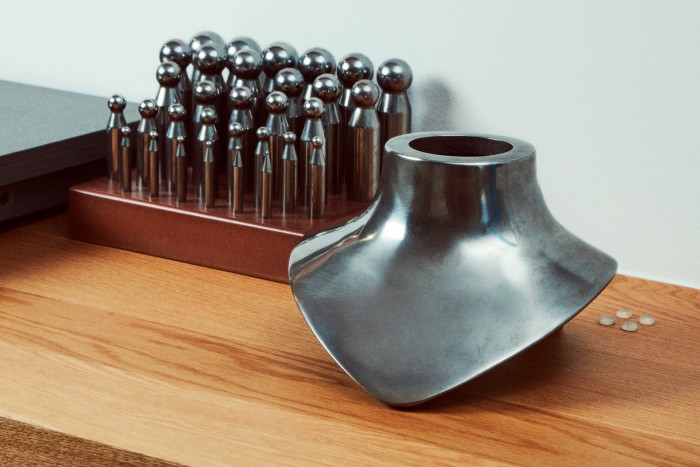
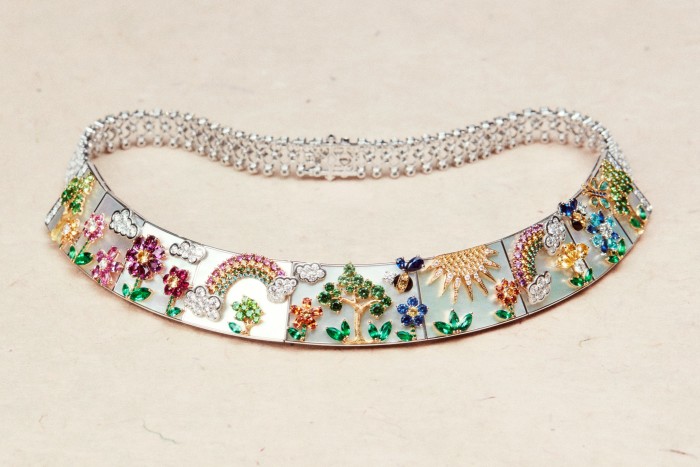
Having previously worked with Karl Lagerfeld on accessories and costume jewellery, de Castellane joined Dior in 1999, where she challenged the industry’s deeply embedded conventions, dismantling the formality and seriousness of precious jewellery and initiating a New Look for haute joaillerie, ramping up size, volume, colour and figurative storytelling, and injecting it with the freedom of bijoux fantaisie.
With such strong views on structure and volume, a close relationship between designer and artisans is crucial. Translating a creative vision into a physical collection must not only consider precious metals and gems, but also ensure the jewels are comfortable, move with the body and bring touches of light to the right places.

To aid this, Dior installed and equipped its own high-jewellery workshop just over a year ago, situated close to the design studio, flooded with daylight and looking out over the Paris rooftops. On the day I visited, the 15 or so artisans were crafting some of the most complex creations from Les Jardins de la Couture. A collection of this kind, with 170 jewels of technical complexity, takes at least 18 months from start to finish, and the artisans have to work particularly hard to bring de Castellane’s ambitious ideas to life. “We’re on a constant search for new techniques to express ideas,” explains de Castellane. “I love pulling the thread through the different themes, finding new interpretations, letting the ideas unfold.”
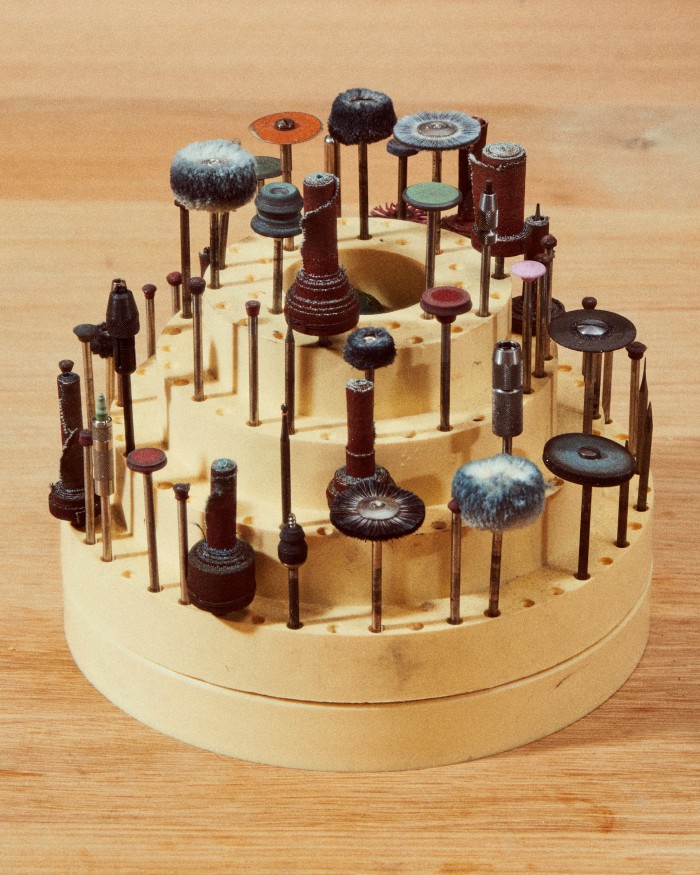
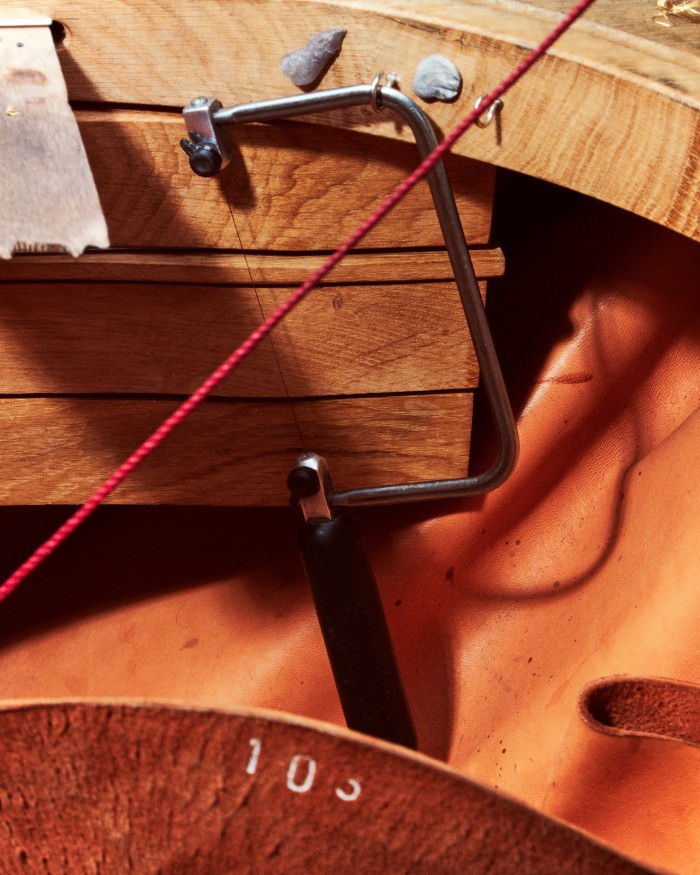
Creating the lush, thick, leafy brambles of the Buissons necklaces, for example, posed a special challenge, as each gem-set petal had to be precisely placed, then assembled in layers. “It was very challenging to position each stone perfectly to create sensuality, the luscious randomness of nature,” says de Castellane. “I didn’t want a simple garland. It is about a balance of chaos and order, a balance within asymmetry.”
Each of the artisans in the Dior atelier is a specialist; there are the CAD designer, the jewellers who work in gold and wax to sculpt models, the gem setter and the polisher. Each focuses on and perfects every aspect of that one stage of the process.
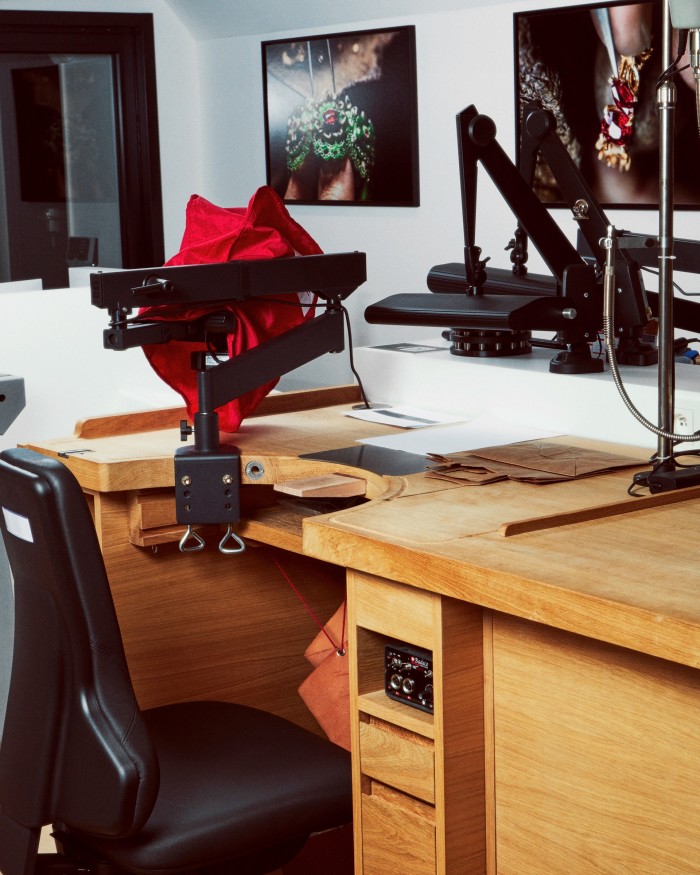
Once de Castellane and her team have explained the themes to the workshop, a gouache is created before a CAD designer translates the designs into 3D form, planning and plotting structure, volumes, proportions, articulations and practicalities. Next, a model is made from wax to check and perfect these details, after which the handcrafting process begins. Sometimes a design changes during production, often due to technical or practical considerations, such as if earrings turn out to be too heavy. De Castellane makes frequent visits to the atelier. “They know me well,” she says.
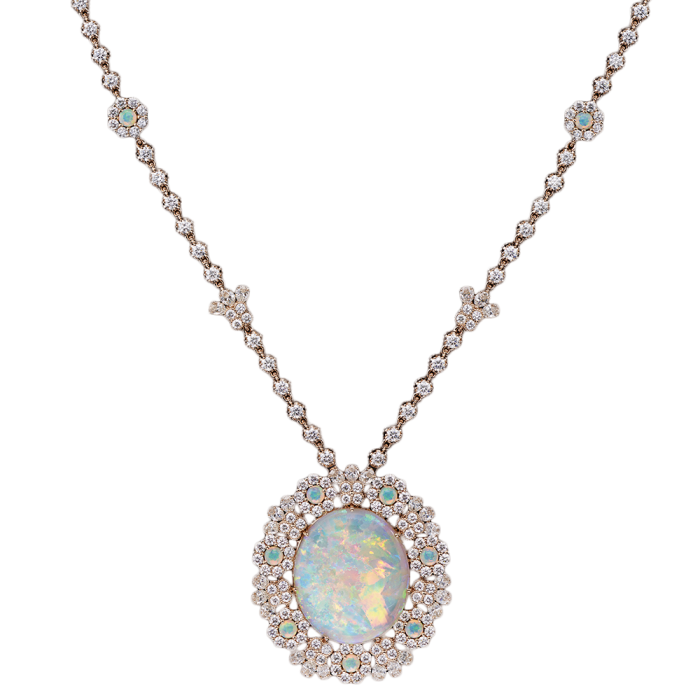
Rose-gold, diamond and opal necklace, POA
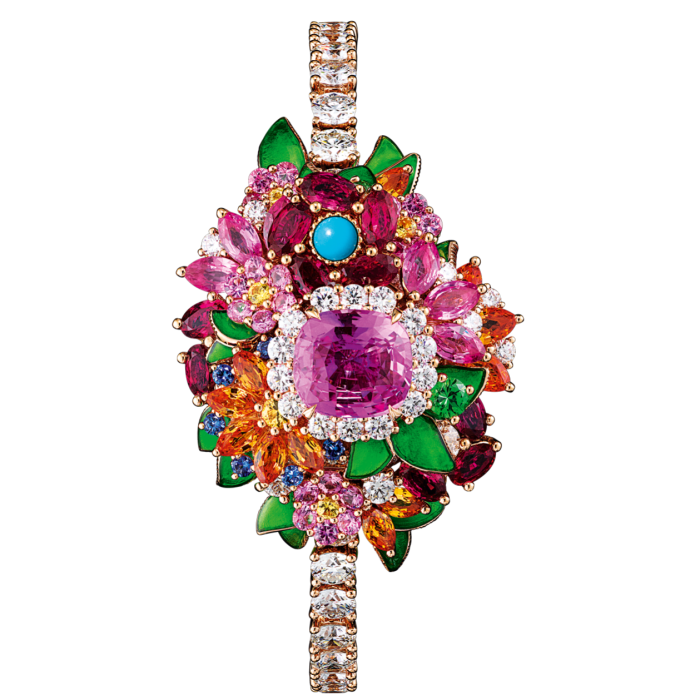
Pink-gold, diamond, sapphire, ruby, garnet, turquoise and lacquer timepiece, POA
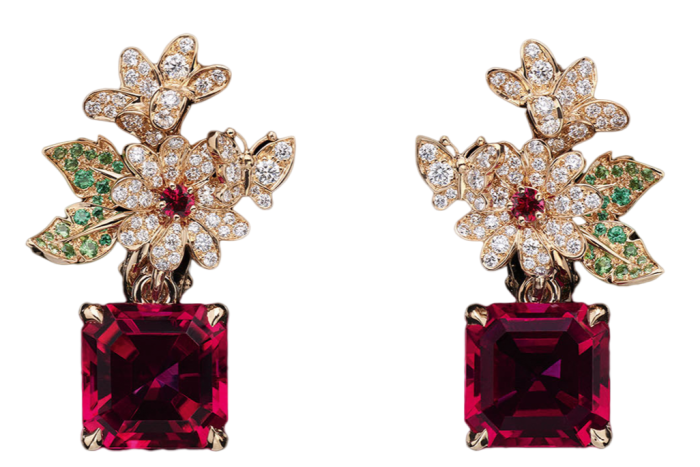
Pink-gold, diamond, rubellite, emerald, ruby and garnet earrings, POA
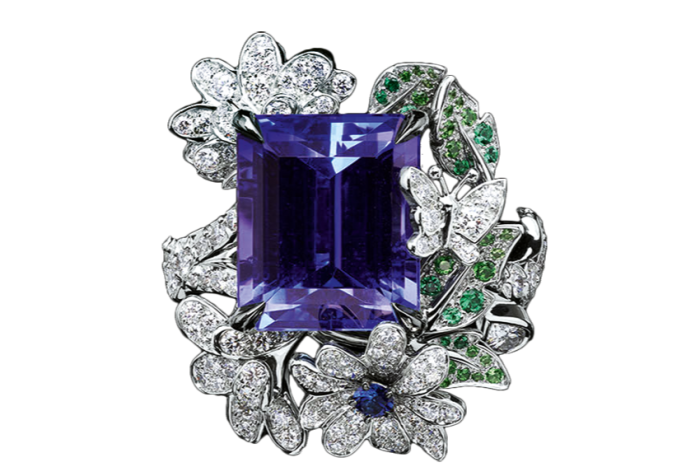
White-gold, tanzanite, emerald, sapphire and garnet ring, POA
I’m shown work on one of the collection’s star suites, the Mini Milly Jardin, that is being handcrafted in its entirety in the Dior atelier. The collar is composed of articulated mother-of-pearl plaques seemingly “embroidered” with tiny gem-set motifs – a sun, clouds, butterflies, trees, flowers, rainbows – depicting a garden drawn with joyful, spontaneous naiveté. It is inspired by a memory from de Castellane’s childhood, she explains: her mother owned an evening bag that had a clasp embellished with a Japanese garden, pagoda and parasol. It had been given to her mother by Barbara Hutton, her father’s godmother and a good friend of her grandmother. De Castellane was always fascinated by the bag, so she recreated it as a child’s imagining of Christian Dior’s much-loved Milly-la-Forêt garden.
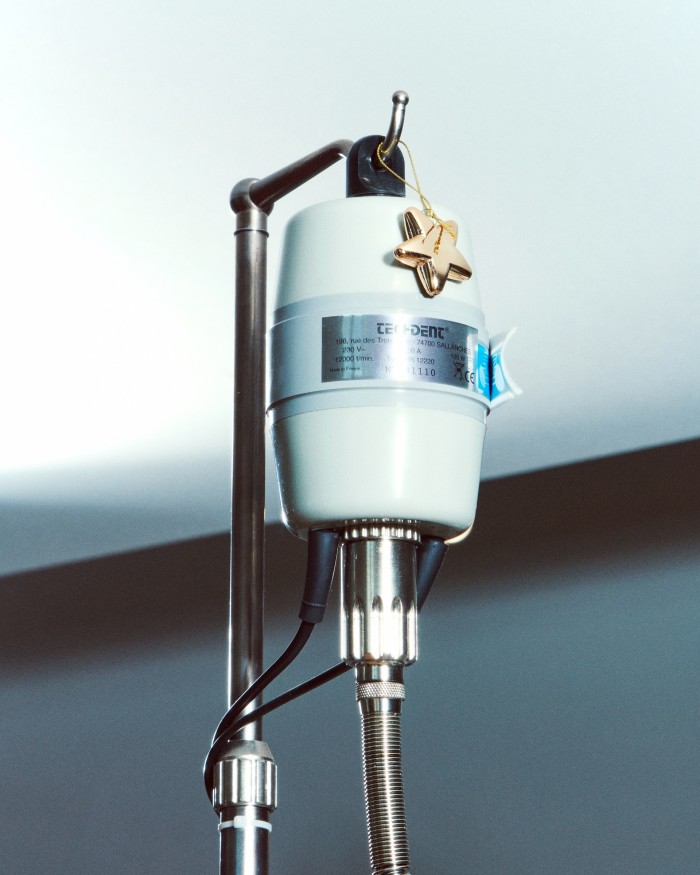
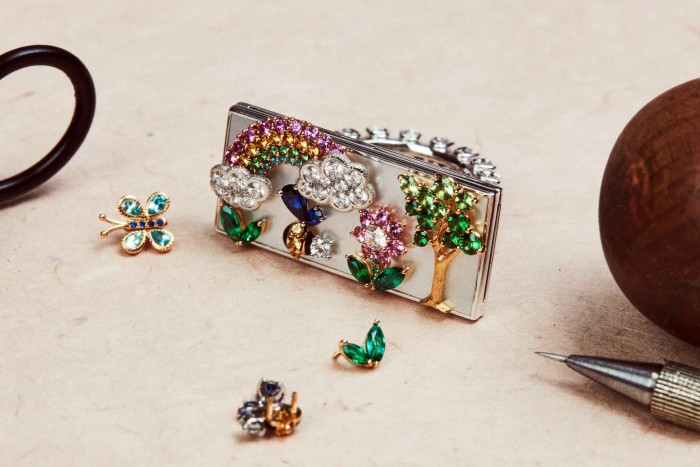
Each of the minutely detailed elements is a jewel in its own right, invisibly attached to the mother-of-pearl plaques, which are then joined, through supremely flexible but invisible articulations, to a network of diamonds that flows around the back of the neck. I’m told the necklace, so far, has already taken 900 hours of work, mainly gem-setting and 180 hours of polishing.
The collar is accompanied by earrings, ear cuffs and a ring, while the broader collection also includes belts and anklets – delivering both the “touches of light” de Castellane aimed for in the Lake Como show and a more youthful take on high jewellery. “I’m not obsessed with youth,” says de Castellane. “It’s more about positivity and feeling comfortable in the jewellery. More and more people are attracted to jewellery these days. There are more clients, different clients, who see jewellery as our most precious accessory.”
Freedom fuels de Castellane’s imagination, just as dreams feed her creativity; they are like the “oxygen of life” to her. “I’m lucky to be in a business that’s all about dreams, a marvellous world of artistry and artisans. I never tire of working for women, I never tire of stories. C’est un rêve. But the most important thing of all for me is never to be bored.”
Comments